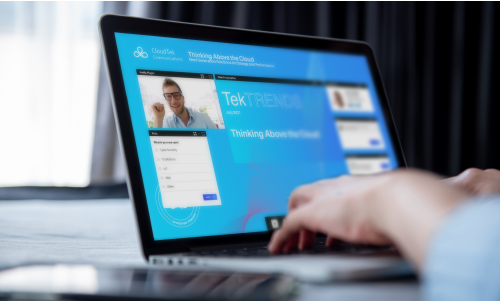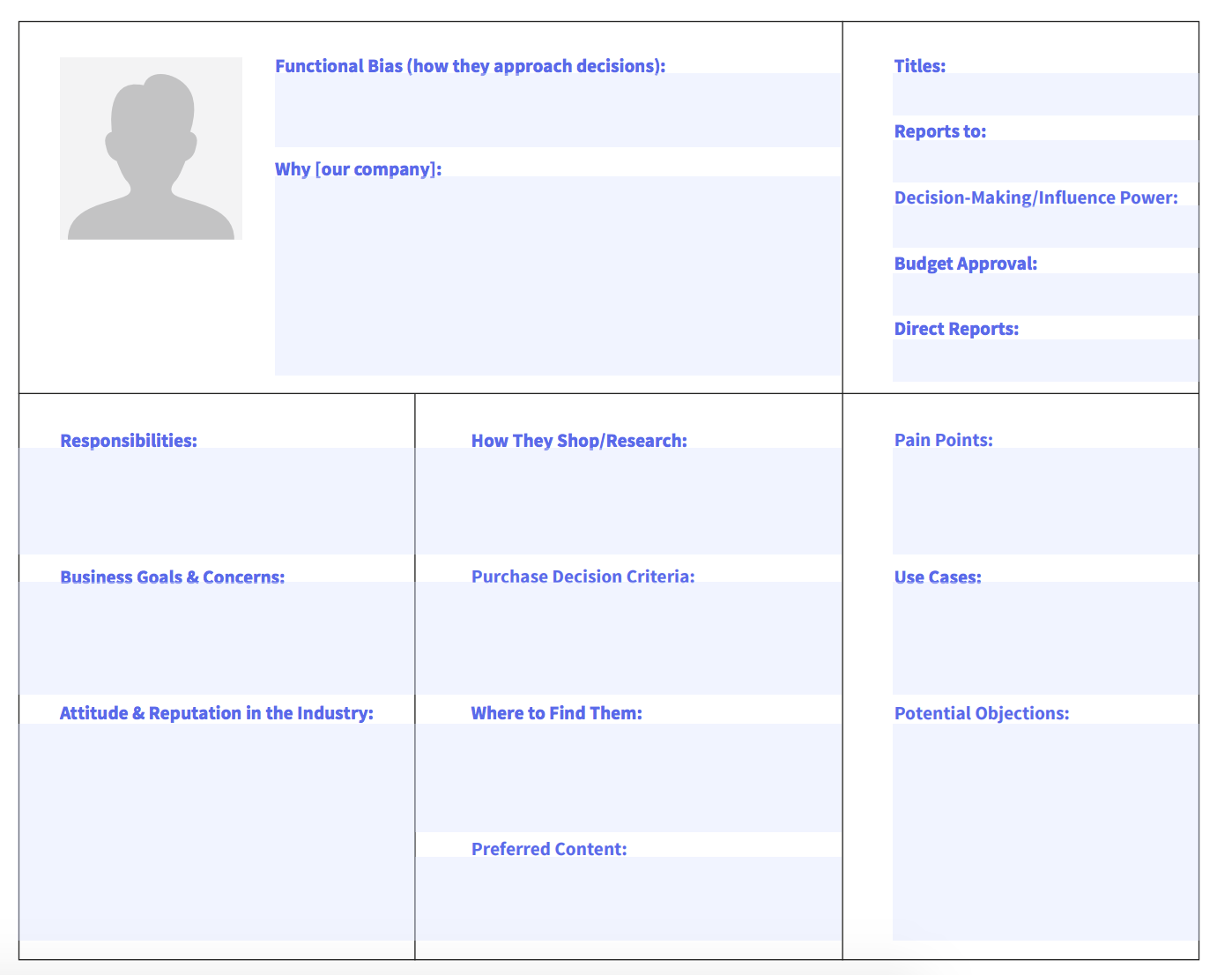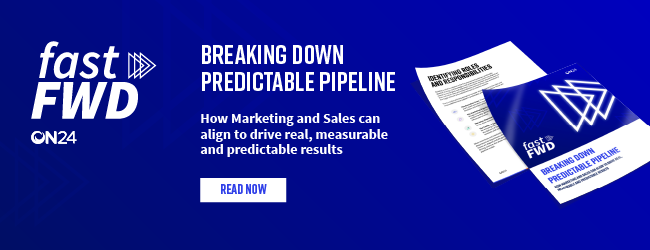How B2B Marketers Can Build Predictable Pipeline

contents
Introduction: Achieving More with Predictable Pipeline
The Elements of the Predictable Pipeline Model
Stages of the Customer Journey
Creating Content for Predictable Pipeline
What a Predictable Pipeline Marketing Campaign is
This is the Future of the Revenue Marketer
Introduction: Achieving More with Predictable Pipeline

It takes the effort of an entire organization to achieve quarterly revenue targets, but achieving those targets consistently to ensure year-over-year growth?
That’s predictable pipeline marketing.
When successfully implemented, a predictable pipeline model aligns and integrates sales, marketing and customer success efforts to generate steady qualified leads and seamlessly move them throughout the entire buying journey.
Now you’re expecting the myth-busters team to charge into your (home) office and shatter the notion of this seemingly unattainable framework.
Well, guess what? They’re not coming.
The fact is that building a marketing pipeline program that delivers repeatable, scalable and predictable results is not as hard as you may think.
From establishing measurable revenue targets to integrating sales and marketing teams, and optimizing tech stacks to delivering thoughtful campaigns and personalized content journeys, a predictable pipeline framework ensures your organization achieves optimum results quarter after quarter and year after year.
So, how can you get started with a predictable pipeline model?
Well, you’re looking at it.
This guide will provide you with a high-level overview on building an organizational structure in which every member of the marketing, sales and customer success teams take on equal revenue responsibility and work strategically, efficiently and cost-effectively to close deals and drive measurable revenue.
Read on to learn more.
Identifying Roles and Responsibilities

Building a solid foundation is the first step toward building a predictable pipeline strategy, and that begins with making sure your teams are aligned on overall business goals and objectives. Every team member should be clear on their individual roles and responsibilities and how those roles contribute to the bigger picture and understand how to measure success.
There are four primary groups to consider regarding the roles and responsibilities that support a predictable, profitable pipeline. These are:
The Executive Team: These are the company leaders and C-level executives responsible for the culture, direction and vision of the company.
The Marketing Organization: The marketing organization is accountable for all things marketing, from buyer personas to messaging, content to MQL generation and, ultimately, marketing-influenced revenue.
The Sales Organization: As the name suggests, these professionals are accountable for all things sales — from sales forecasting and converting MQLs to closing deals.
The Customer Success Organization: Are accountable for ensuring customers are onboarded successfully, the delivery of high-quality service in perpetuity, and renewals and expansions.
When incentives and interlocks are uncertain, or inconsistent from department to department, the system falls apart.
But when these teams are aligned and the goals are focused on closing deals and driving revenue, the whole organization inches toward a predictable pipeline model.
Tools for Predictable Pipeline

An effective tech stack should comprise tools that help you drive your business objectives, automate your campaigns, and fuel your data flows. Sounds easy enough, right? You might be surprised.
There are so many tools and technologies available today, it can get downright overwhelming to decipher how to select and implement an appropriate tech stack, and indeed find the marketing pipeline definition. Too often, organizations look at tools before creating their overall strategy resulting in mismatched tech solutions, overinvestment and misusage.
When the wrong tools (or too many tools) are in place, workflows get disrupted and goals become convoluted. To make sure you are getting the most out of your tech stack, it helps to categorize tools and technology by function.
-
- Foundations: Foundational tools are the foundations of your business operations. They connect to numerous other tools and are core to the success of your sales, marketing, and customer success programs. Without them, it’d be incredibly challenging to do any thoughtful, automated or timely campaigns.
- Orchestrators: Orchestration tools help marketers and sellers plan and orchestrate their efforts more seamlessly, efficiently and effectively
- Identifiers: Identification tools help identify prospect accounts and targets who fit within your desired audience and ideal customer profile.
- Attention-Getters: Attention tools are essential, and help capture the attention of prospects through inbound activities, search engine optimization and social media.
- Engagers: Engagement tools enable people to engage with your business through outbound activities and website functionality.
- Optimizers: Optimization tools help you to analyze your data, enabling insights and actions that can be used to optimize the performance of your business efforts.
You can see how this can quickly become complicated.
Most organizations unwittingly end up with extensive tech stacks full of flash-in-the-pan applications that get a job done, but do not necessarily fit into the overall strategy, or integrate with the rest of the stack.
It’s important to remember that the tools and tech platforms are there to support your initiatives, not to dictate them. We have all worked for organizations that fall into this trap. And in all fairness, it’s hard not to! Selecting the right tools and mapping where and how they fit into your overall objectives will help your teams work smarter, faster and more effectively.
But what is the secret to putting together this elusively operative tech stack? There are a few things to keep in mind.
First, you need to really understand the tools you already have and if you are using them to the full extent of their capabilities. This will help you identify the gaps between what you have and need and help you better evaluate prospective tools.
Ask yourself this: what are your greatest needs, goals and desired outcomes? Identifying and prioritizing those needs will also help you measure the effectiveness of your tools to ensure they are being utilized effectively.
The Elements of the Predictable Pipeline Model

Define Your Ideal Customer Profile
Delivering the wrong content at the wrong time to the wrong audience is like ordering messy ribs during an important business lunch or crab legs on a first date. Wrong place, wrong time. And the consequences can be devastating to your business.
Building out thoughtful content, messaging, and campaigns will help you avoid going after the wrong people with the wrong message. But before that process begins, you must clearly understand your ideal customer.
Not to be confused with a buyer persona, an Ideal Customer Profile, or ICP for short, refers to the characteristics of your ideal buyer at the account level rather than the individual level.
This includes characteristics such as industry, company size, current tech-stack gaps, company values and aspirations, product releases etc. Going into an acquisition opportunity equipped with a complete and accurate ICP will help you avoid embarrassing blunders and lost opportunities.
It will also help you pique the interest of your prospective buyers and, ultimately, move them through the customer journey.
Keep in mind that not every company you service will meet your criteria for an ICP, so you may want to do a little bit of digging when determining what kinds of attributes yours might include.
What Is the Buying Scenario?

Understanding how a purchase gets made will help you determine how to approach each member of the committee. Understanding factors like purchase timeframes, number of buying centers and members, as well as what level a purchase decision can be made can massively help marketers and sellers more effectively plan and go to market with the right content, message, channels and expectations in mind.
Below, we have identified three distinct buying scenarios as observed by SiriusDecisions.
| Scenario | Decision Authority | Purchase Timeframe | # of buying Customers | # of Members |
|---|---|---|---|---|
| Committee | Agreement at the executive leadership level | One to two quarters (or more) | Five (or more) | Six to 10 (or more) |
| Consensus | Agreement across teams, functions or departments | One to two quarters (but no more) | Three to four | Three to five |
| Independent | Agreement among individuals | Less than eight weeks | One to two | One to two |
When we ask who plays a role in the buying scenario, we think about four distinct personas or roles:
Decision Makers:
Personas who have the final decision on a purchase (i.e., they have Yes/No authority). Decision Makers fall into one of two categories:
Business Decision Makers:
Personas who are focused primarily on how the purchase impacts business ROI and revenue.
Technical Decision Makers:
Personas who are focused primarily on how the purchase impacts business technologies, processes and operations.
Executive Sponsors or Champions:
Personas who drive the purchase decision forward internally, acting as the primary spokesperson for your solution amongst their teams and the executive leadership.
Purchase Influencers:
Personas who may not have a direct role in the purchase decision, but they influence the outcome. They fall into one of two categories:
Business Influencers:
Who are focused primarily on how the purchase impacts business ROI and revenue.
Technical Influencers:
Who are focused primarily on how the purchase impacts business processes and operations.
Users:
Personas who will use the product in their day-to-day jobs. They are directly impacted by the purchase and are focused on how the solution will help them be more efficient, effective and productive.
For example, many sales development representatives begin the conversation by speaking to someone who will likely be using the product daily.
To continue the conversation, this sales representative will need to appeal to this “purchase influencer” by demonstrating how the product in question will help make their job easier. The conversation changes completely when dealing with Business Decision Makers who are going to be much more interested in how this solution will impact revenue and ROI.
Developing Buying Personas

What the Buyer/Customer Journey Is
Once upon a time, the buyer’s journey was straightforward, linear and easy to understand. From awareness to consideration to decision-making, marketers could easily map out content journeys that made sense and could reliably anticipate conversion.
But buyers are not as predictable as they once were. With countless content options being delivered via a multitude of digital mediums, touting countless service and product options, buyers now have the ability to “shop around” on their own terms and timeline, resulting in a buying journey that does not progress from left to right or top to bottom. In other words, technology has completely changed the way the markets operate.
Essentially, there is no funnel.
Buyers have taken control of their own journeys. In fact, 70% of buying decisions are now made long before the initial sales call. Still, there are guiding principles of the buyer and customer journey that marketers can account for.
Stages of the Customer Journey

Buyers will not always move toward a purchase decision as we traditionally expect them to, but it’s still helpful to understand each stage of the customer journey to create a fuller picture of buying committees and, ultimately, accelerate their decision to purchase.
For every phase of this journey, buyers will have a separate set of questions, actions and needs, all of which you should aim to identify so you can better align the appropriate content with the appropriate stage.
It’s helpful to think about the Customer Journey in six primary stages. Each stage is centered around a specific action or state that the buyer is in. These stages help us, as sellers and marketers, better understand what our buyers are looking for, what questions they have, and, therefore,what they need:
Awareness: During the awareness phase buyers are still looking for solutions to their immediate problems and for ways to improve the efficacy of their organization as a whole. This is generally when a buyer will begin researching to understand better their problems and what types of solutions exist to help them.
Helping prospects to articulate their problems at this stage will also help them to understand the consequences of failing to correct these issues.
Solution: During this stage, the buyer has likely become more aware of their challenge and is now actively looking for solutions that address it. They might ask themselves some questions, like how their peers are addressing this issue and what solutions have others tried and seen.
Your goal at this stage should center around proving to the prospect why and how your solution is a good fit for their organization.
Selection: This is typically the phase during which the buyer is ready to make a final purchase decision and become a customer. But before taking the leap, they will want to be sure that your product is going to be able to meet their needs and help them be successful.
Buyers often make this determination by asking themselves whether your other customers are happy, if your product is within their budget, and whether or not you can truly meet their needs.
You can help buyers through this process by serving up content that validates their decision to purchase. This can include case studies and online reviews.
Service: Once the customer is onboarding and/or beginning to implement and utilize your solution, they will want to make sure they are getting the most out of what you have to offer.
Remind them why they chose you by ensuring a smooth onboarding and providing the right resources, materials, and guidance.
Engagement: If everything has gone according to plan, your customer is engaged with your solution at this point, and eager to explore more ways to work with you.
Give your customer new and novel ways to expand/renew their current contract.
Advocacy/Loyalty: By now, your customer has become a strong advocate of yours, and they have trust in your business. Reward their loyalty and celebrate their achievements by asking for referrals and testimonials on their behalf!
This will go a long way with your customer and may even help you move potential buyers through the selection phase of their journey.
Let’s Check-In:
We addressed the many potential buying committee members earlier. Now is a good time to apply your understanding of where each member fits into the purchase decision, as not every persona is active at every stage of the customer journey.
A C-level executive might be heavily involved at the Selection stage, a mid-level manager might be highly active in the Solution stage, and an operations lead might take control at the Service stage.
Understanding who in your target audiences’ buying committees is most active and most engaged at each stage of the customer journey enables you to provide the right content, with the right message through the right channels to facilitate progression and conversion.
Creating Content for Predictable Pipeline
Persuading potential customers to buy your product or service relies on your ability to craft effective messaging.
Address pain points, offer solutions and answer questions to build your case. This will also be the messaging that marketing and sales teams will use as a foundation to engage buyers and close deals.
Unfortunately, there’s no one-size-fits-all approach when it comes to crafting meaningful messaging to get the job done.
It’s important your messaging is personalized, relevant and authentic, but being authentic and personal is about more than using first names in emails. Meaningful messaging is about giving, educating and providing useful resources when your customers need it most. In other words, it’s about going above and beyond for your customer.
We think about messaging using four key components:
-
- The Primary Message can be considered the main takeaway we want our audience to have when they think, read or hear about our solution. This message should be focused entirely on the outcomes of purchasing your solution. How is the purchaser enabled to achieve their goals with your solution?
- The Challenge Messages are the main challenges audiences face that hinder their ability to achieve their goals. What are the roadblocks to success? Where do they feel the most pressure coming from?
- The Benefit Messages are the key benefits of your solution that address the challenges your audience faces. These messages should, like the Primary Message, be focused entirely around the outcomes of purchasing your solution—communicating what your solution can accomplish for them.
- The Solution Features are the key product features enabling outcomes expressed in the Benefit Messages. These should be product-specific—communicating what your solution does.

Building a Content Plan

Predictable pipeline depends on a constant stream of high-quality content that connects with specific audiences at various stages of the buying journey.
While someone in the decision phase of their journey might be looking for case studies and testimonials, a buyer in the awareness stage might be more interested in a thought leadership piece like a blog or educational webinar. Your job as the marketer is to serve relevant content buyers can consume when and where they need it.
With the various mediums and content types available to us today, it’s also important to consider the type of buyer you are trying to engage. Some buyers respond to video content while others prefer e-books, articles or webinars.
Having a breadth of content addressing the different points between buyers—and having that content in a variety of formats—is essential.
To create content that converts and drive a predictable pipeline, you will need to set defined goals, clearly identify audiences, produce content on a variety of topics in a variety of formats, and put it all together in a marketing campaign that converts.
Define Content Goals
The first step to creating content that converts is creating and defining your goals of moving a prospect to the next stage of their buying journey.
Take a step back and ask yourself why you need a particular piece of content, who that content is for, what it is—from theme and topic to format— where it resides in the buying journey, how it will move prospects to the next stage and where you’ll promote it.
With these questions answered you should have enough material to draft a goal for your content. Use the SMART framework (specific, measurable, actionable/achievable, relevant and time-bound) to set goals for your content.
For example, if your objective is to collect net new names, your SMART goal may look something like this:
What we want to accomplish: we want to increase the percentage of industry leaders subscribed to our blog.
-
- Specific: Increase the number of industry thought leaders to our blog.
- Measurable: In a regular month, we get about 15 notable thought leaders who subscribe to our blog. Let’s increase those blog subscriptions by 25%.
- Actionable/Achievable: Yes, through use of our website blog, thought leadership material, social promotion and guest posting.
- Realistic: Certainly, provided content is targeted and engaging, which may mean we need to develop content in multiple formats.
- Time-bound: We have a small team, so let’s start with “heavy” content that’ll take time to develop but can be reused across different channels. Because of this, we’ll aim to hit that 25% increase by the end of the quarter.
With a high-level goal and objective, you’ll better understand how to hone in on your audience.
Take a note of where your target audience primarily resides, which industry or verticals they’re in, company size, the different personas they may work with and where in the buying journey they may be.
Topic, Format and Content Strategy
After your goals and target audiences are defined, you’ll need to decide on a topic and format to connect with your audiences.
To help identify suitable topics to create content on, write down two or three content themes reflective of your company values and messaging. Don’t overthink this stage—themes can be as simple as “Predictable Pipeline.”
With your themes in place, develop your content topics. These ought to be a simple list of topics relevant to your theme that you can develop content on. For example, if your theme is “predictable pipeline,” then topics can include “how predictable pipeline affects marketing,” “the role of sales in predictable pipeline,” “why predictable pipeline is important,” and others.
The topics you list should naturally map to an audience and, in some cases, a stage. For example, “why predictable pipeline is important” is a very high-level, big-picture topic, meaning it’ll likely connect with audiences at the top of the funnel and are beginning their journey.
Here, short-form, passive content, such as blog posts, briefs or short videos can introduce your audience to the theme and push them to the next stage – it’s important to not overdo it.
Understand the closer your audience comes to deciding on your product, the more targeted and involved your content will need to be. A technical person on a buying committee will happily sit through an hour-long webinar so long as it provides a deep exploration of how your product works and integrates with the wider business.
To help you identify and target your content to these audiences, break out your ideal customer profiles along personas (e.g., executive, managerial, technical) and stages (awareness, solution and selection). With this content strategy matrix in place, you’ll be able to map your topic ideas to the ideal stage, persona and content format.
Integrating Content Into a Campaign
Now you have a good idea of what content is needed for which persona at what stage of the buying journey. The next step? Neatly wrapping it all up into a succinct campaign.
When thinking about a campaign you need to consider several factors. Ask yourself some questions — what are your objectives and goals, what target personas will be involved, which core messages you’ll promote and on which channels will your campaign live? — to hone your campaign thinking.
Take the time to also think about who on your team is responsible for what, what you’ll need to contract out (e.g., copywriting, website development, etc.) and what specific content you’ll need to support your campaign.
You should also identify how your campaign will fit within the wider customer journey and experience at this stage.
Does the campaign target the top or bottom of the marketing funnel? How will your audience progress from one stage of the campaign to the next? What will your sales team need to do to help connect and accelerate prospects?
Finally, what will your audiences do once the campaign is over? Will they convert or take advantage of a new product or feature?
Sit down with your wider marketing and sales teams to walk through these questions and refine your approach.
What a Predictable Pipeline Marketing Campaign Is

Reaching audiences today requires a strategic, well-defined, structured approach beyond sending a few emails and white paper download offers. Acquisition, retention and loyalty become achievable with long-term marketing campaigns that include content and messaging that build trust and rapport between brand and consumer.
An effective marketing campaign should consider the context of the greater customer journey, including channels, messages, content and personas.
How do all of those pieces evolve as a buyer progresses from one touchpoint to the next? How can you incorporate messaging and content in a way that gets and keeps the attention of buyers. Short-term activity and long-term value should align.
No matter what, your customer should always be at the center of your campaign.
We think about campaigns by answering eight central questions:
Objectives: What specific outcomes do we hope to achieve with this campaign?
Goals and KPIs: How will we measure the effectiveness of our campaign?
Target personas and buying stages: Who exactly are we creating this campaign for?
Core message and themes: What do we want our campaign to say and communicate?
Internal teams: Who is involved internally to help plan, orchestrate, and manage this campaign?
External teams: Are there freelancers, copywriters, or agencies that should be accounted for too?
Channels: What channels will we utilize throughout this campaign?
Content: What content will we utilize throughout this campaign?
Results: How has our campaign performed?
Understanding Intent Data
The average B2B buyer today has conducted a lot of their research before they ever engage with a salesperson. In fact, according to CEB “57% of the purchase decision is already complete before the customer even calls the supplier.”
So, how do you ensure these buyers don’t go under the radar with a competitor? Simple: You use intent data to fill in the gaps.
Intent data is all about understanding the specific buyer behaviors and actions they take across the Internet. For example, what content types and topics are your buyers downloading? How much time are they spending on each piece of content, and how often are they downloading from you?
Monitoring these content-based activities will give you valuable insight into the interest and needs of your buyers, which is crucial for business success.
This is also an amazing way to put your engagement data to good use. All those opens and clicks your marketing teams have been tallying can now become invaluable contributions to the pipeline.
Monitoring opens and clicks on a specific campaign, frequency of engagement, attendance of webinars, online subscriptions etc. will help you understand who is demonstrating intent so you can respond accordingly.
Putting intent data into the context of the greater customer journey is also a huge step in this process. By reading into the specific actions of your buyers, what can you discern about their buyer persona or buying situation? Where do they currently live in their customer journey?
While linking buyers to specific topics, focus areas, or solutions is helpful, your intent data is only as effective as your ability to put it to good use.

When it comes to acting on intent signals, different types of buyers require different types of responses depending on the type of intent they demonstrate.
For example, a marketing manager who has downloaded a few white papers will require a much different response than a CMO who recently attended your webinar.
Measuring Campaign Success

Marketing is out of the business of delivering names. A marketing-qualified lead is not direct enough to adequately predict pipeline and revenue. True sales and marketing conversions occur when marketing can track sales-qualified leads and direct pipeline contribution.
Many companies still struggle to agree on measuring and defining success. Marketing goals revolve around generating more MQLs, whereas sales teams are often sent into the breach without the data and insights they need to hit their targets.
These teams need to converge around a single target for pipeline and revenue goals and align accordingly. For example, a well-run organization knows marketing and sales both need equal revenue responsibility to create predictable pipelines.
When it comes to measuring campaign success, every organization will likely have different views of what needs to be tracked and reported on. For example, different campaigns will require different metrics.
So determining what’s most important will essentially depend on the context of your own situation. Still, that doesn’t mean that there aren’t fundamental ways to guide how you measure success.
We think about measuring success as five cyclical stages:
Goal Setting: At this stage, you should identify the goals and outcomes you want to achieve. You should also ensure those goals and outcomes align to or influence the organization’s greater goals.
Selection: Here, you’re selecting the right metrics for your campaign.
Analysis: At this stage, you’re analyzing the performance of your campaign.
Benchmarking: This is where you benchmark your campaign’s performance to historical performance and industry averages to identify where you excel, fall short, and improve.
Optimization: Based on your analysis and benchmarks, you should determine how to improve your campaign to more effectively and efficiently meet your goals.
But measuring metrics alone is just part of the job. Unfortunately, many marketers make the mistake of tracking activities over outcomes. The truth is that many CMOs and other executive leaders don’t care about the number of MQLs you’re generating — they care about the impact those MQLs have on the pipeline.
That’s why it’s important to understand the differences between programmatic and revenue metrics and to tell a coherent story from one metric type to the next.
Programmatic metrics are what you’ll typically use to gauge the performance of your campaigns. These are still metrics you should actively track, but aren’t necessarily the ones that directly correlate to marketing’s revenue impact.
Revenue metrics, on the other hand are what you’d show to your CEO, CFO. This is the metric that will show your stakeholders the revenue impact of your marketing efforts.
This Is the Future of the Revenue Marketer

The bottom line is that we need to drive results if we want to meet our annual goals.
Unfortunately, there is no magic bean guaranteed to grow us a pipeline capable of delivering consistently. We have to grow it ourselves. And that starts with putting a revenue plan at the center of our marketing and sales strategies.
Companies must leverage digital tools to look beyond the current pipeline and provide a long-term vision for prospects and clients.
It’s not about collecting more MQLs or getting bigger and better data. It’s about implementing marketing that enables the sales process and drives pipeline in a predictable way.
From understanding our ICPs to breaking down the many phases of the customer journey, dividing and conquering our buying committees, and creating content that supports thoughtful marketing campaigns, there is no one-size-fits-all all approach. But establishing equal revenue responsibility across sales, marketing and customer success teams ensures that marketing programs generate leads, drive pipeline, and hit revenue targets quarter after quarter and year after year.
